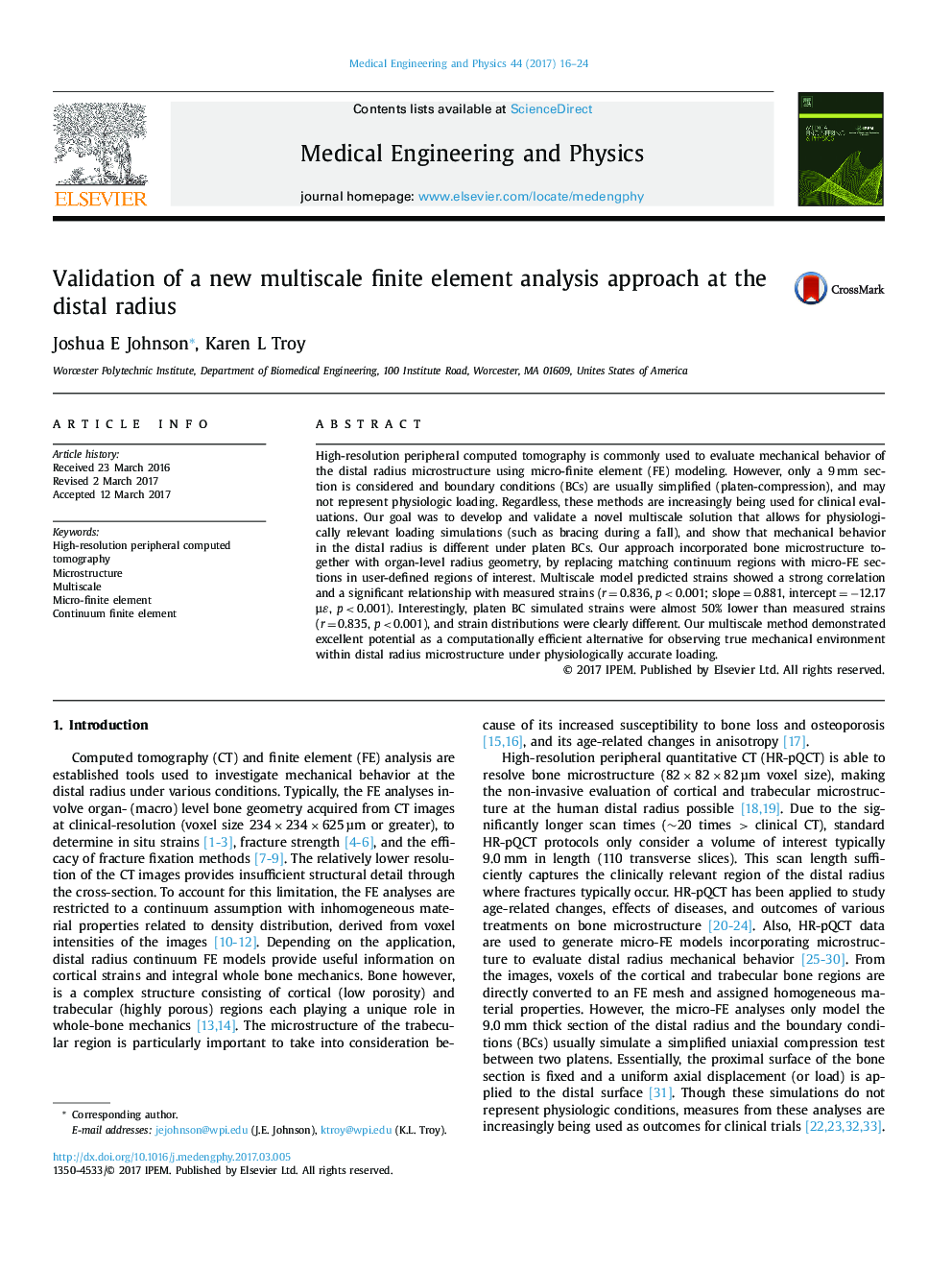| Article ID | Journal | Published Year | Pages | File Type |
|---|---|---|---|---|
| 5032696 | Medical Engineering & Physics | 2017 | 9 Pages |
â¢A novel multiscale approach for physiologically relevant micro-FE simulations.â¢Multiscale model predicted strains validated against experimentally measured data.â¢Different mechanical response between physiologic and standard simulations.
High-resolution peripheral computed tomography is commonly used to evaluate mechanical behavior of the distal radius microstructure using micro-finite element (FE) modeling. However, only a 9 mm section is considered and boundary conditions (BCs) are usually simplified (platen-compression), and may not represent physiologic loading. Regardless, these methods are increasingly being used for clinical evaluations. Our goal was to develop and validate a novel multiscale solution that allows for physiologically relevant loading simulations (such as bracing during a fall), and show that mechanical behavior in the distal radius is different under platen BCs. Our approach incorporated bone microstructure together with organ-level radius geometry, by replacing matching continuum regions with micro-FE sections in user-defined regions of interest. Multiscale model predicted strains showed a strong correlation and a significant relationship with measured strains (r = 0.836, p < 0.001; slope = 0.881, intercept = â12.17 µε, p < 0.001). Interestingly, platen BC simulated strains were almost 50% lower than measured strains (r = 0.835, p < 0.001), and strain distributions were clearly different. Our multiscale method demonstrated excellent potential as a computationally efficient alternative for observing true mechanical environment within distal radius microstructure under physiologically accurate loading.
